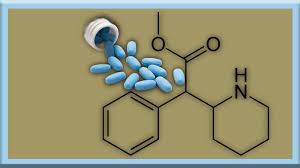Stimulants For Adhd.Attention-Deficit/Hyperactivity Disorder (ADHD) is a neurodevelopmental disorder characterized by inattention, hyperactivity, and impulsivity. Stimulant medications are among the most commonly prescribed treatments for ADHD. They are effective for many individuals with ADHD, but as with all medications, they come with potential benefits and risks.
Stimulants For Adhd

1. Types of Stimulant Medications:
There are two primary classes of stimulant medications for ADHD:
- Amphetamines:
- Adderall and Adderall XR (amphetamine and dextroamphetamine)
- Vyvanse (lisdexamfetamine)
- Evekeo (amphetamine)
- Dexedrine (dextroamphetamine)
- Methylphenidates:
- Ritalin, Concerta, Daytrana, Quillivant XR, and others (methylphenidate)
- Focalin and Focalin XR (dexmethylphenidate)
2. How They Work:
Stimulant medications increase the levels of certain neurotransmitters, primarily dopamine and norepinephrine, in the brain. These neurotransmitters play a role in attention, impulse control, and activity levels. By boosting the levels of these neurotransmitters, stimulants can help improve focus, reduce impulsivity, and decrease hyperactivity in individuals with ADHD.
3. Benefits:
- Efficacy: Stimulant medications are often considered the first-line treatment for ADHD because of their proven effectiveness in many individuals.
- Rapid Onset: The effects of stimulants can be felt within 20 to 60 minutes, depending on the specific medication and its formulation.
- Flexibility: Some stimulants come in both short-acting and long-acting formulations, allowing for tailored dosing schedules.
4. Risks and Side Effects:
- Common side effects include decreased appetite, insomnia, increased heart rate, and potential increases in blood pressure.
- Mood changes, such as irritability, anxiety, or even sadness, can sometimes occur.
- There’s a potential for misuse and addiction, especially in adolescents and young adults.
- Rare cardiovascular events have been reported. Therefore, a thorough health history and occasional monitoring may be recommended.
- There’s a small risk of exacerbating tic disorders.
- Growth suppression can be a concern with chronic use, although the evidence is mixed.
5. Non-Stimulant Medications:
For individuals who don’t respond well to stimulants or experience significant side effects, non-stimulant medications may be an alternative. Examples include:
- Strattera (atomoxetine)
- Intuniv (guanfacine)
- Kapvay (clonidine)
These non-stimulant options work differently than stimulant medications and may have a different side effect profile.
6. Considerations:
- Individualized Treatment: The decision to use stimulants (or any medication) should be based on a comprehensive evaluation and ongoing collaboration between the patient, their family, and their healthcare provider.
- Monitoring: Regular follow-ups are necessary to monitor the effectiveness, dosing, and potential side effects of the medication.
- Complementary Approaches: Medication is often more effective when combined with behavioral therapy, psychoeducation, and other interventions.
If you or someone you know is considering medication for ADHD, it’s essential to consult with a psychiatrist or another healthcare professional to make an informed decision.